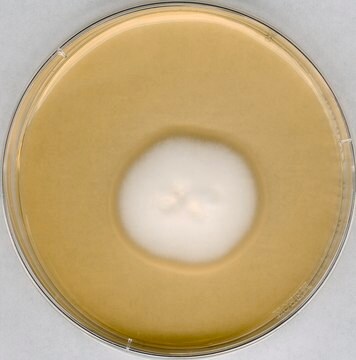Wichtige Dokumente
33361
Mepronil
PESTANAL®, analytical standard
Synonym(e):
3′-Isopropyloxy-2-methyl-benzanilid
About This Item
Empfohlene Produkte
Qualität
analytical standard
Qualitätsniveau
Produktlinie
PESTANAL®
Haltbarkeit
limited shelf life, expiry date on the label
Methode(n)
HPLC: suitable
NMR: suitable
gas chromatography (GC): suitable
mp (Schmelzpunkt)
84-89 °C
Eignung
passes test for identity (NMR)
Anwendung(en)
agriculture
environmental
Format
neat
SMILES String
CC(C)Oc1cccc(NC(=O)c2ccccc2C)c1
InChI
1S/C17H19NO2/c1-12(2)20-15-9-6-8-14(11-15)18-17(19)16-10-5-4-7-13(16)3/h4-12H,1-3H3,(H,18,19)
InChIKey
BCTQJXQXJVLSIG-UHFFFAOYSA-N
Suchen Sie nach ähnlichen Produkten? Aufrufen Leitfaden zum Produktvergleich
Verwandte Kategorien
Allgemeine Beschreibung
Anwendung
Empfohlene Produkte
Rechtliche Hinweise
Sie haben nicht das passende Produkt gefunden?
Probieren Sie unser Produkt-Auswahlhilfe. aus.
Lagerklassenschlüssel
11 - Combustible Solids
WGK
WGK 2
Flammpunkt (°F)
Not applicable
Flammpunkt (°C)
Not applicable
Persönliche Schutzausrüstung
Eyeshields, Gloves, type N95 (US)
Hier finden Sie alle aktuellen Versionen:
Besitzen Sie dieses Produkt bereits?
In der Dokumentenbibliothek finden Sie die Dokumentation zu den Produkten, die Sie kürzlich erworben haben.
Unser Team von Wissenschaftlern verfügt über Erfahrung in allen Forschungsbereichen einschließlich Life Science, Materialwissenschaften, chemischer Synthese, Chromatographie, Analytik und vielen mehr..
Setzen Sie sich mit dem technischen Dienst in Verbindung.